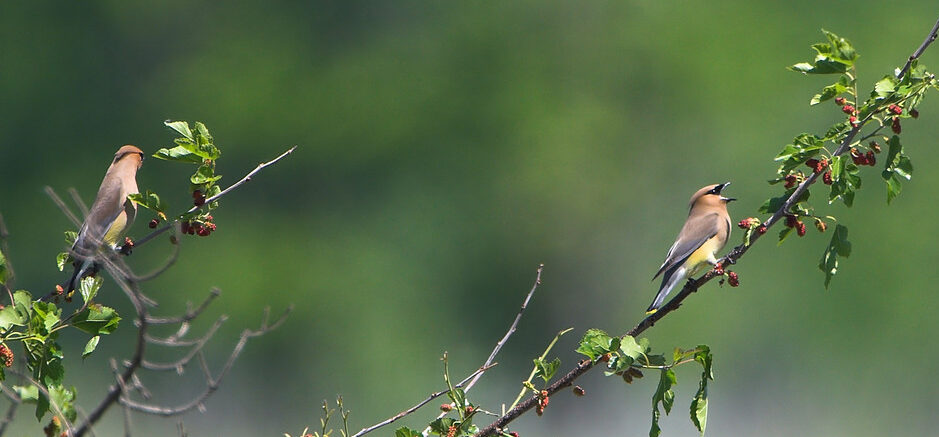Cedar Waxwing, Bombycilla cedrorum
Bill Rowe
The understated beauty of Cedar Waxwings makes them a perennial favorite, whether you’re seeing them for the first time or the thousandth. Usually in flocks, they fly with a tight school-of-fish synchronization that helps distinguish them from all other birds, even at a distance; birders learn to pick them out that way and also by their very high-pitched trilling calls, which are among the first to be lost when your hearing starts to slip. They are common enough, yet unpredictable in their comings and goings, focused on a search for fruits like cedar berries, holly berries, mulberries, crabapples, and many more, both wild and planted. By gorging on these and then moving on, meanwhile passing the seeds through their system, they effectively help propagate the plants they need. And if they take in too many berries that are overripe and fermenting, they can become intoxicated and have trouble perching or flying. In a strange quirk of distribution, the worldwide waxwing family consists of only three species: the Cedar Waxwing covering North America; the Bohemian Waxwing, limited to cold northern regions of this continent but also found across Eurasia; and the Japanese Waxwing of the Far East.
IDENTIFICATION: The black mask on a tan, crested bird with a yellow belly leaves no doubt, and the yellow band at the tip of the tail helps too. Juveniles, often seen with adults in a flock, have blurry brown streaks on the underparts. The only bird like it is the extremely rare (around here) Bohemian Waxwing, which is larger and grayer with dark rusty-red under the tail. No need to worry about the Japanese Waxwing!
ST. LOUIS STATUS: An occasional summer nesting bird here, with numbers building up during the fall, and then an erratic winter resident depending on the food supply. It becomes more reliably numerous again in spring, with large flocks from May into June.
Learn more and listen to the calls of Cedar Waxwings here.




